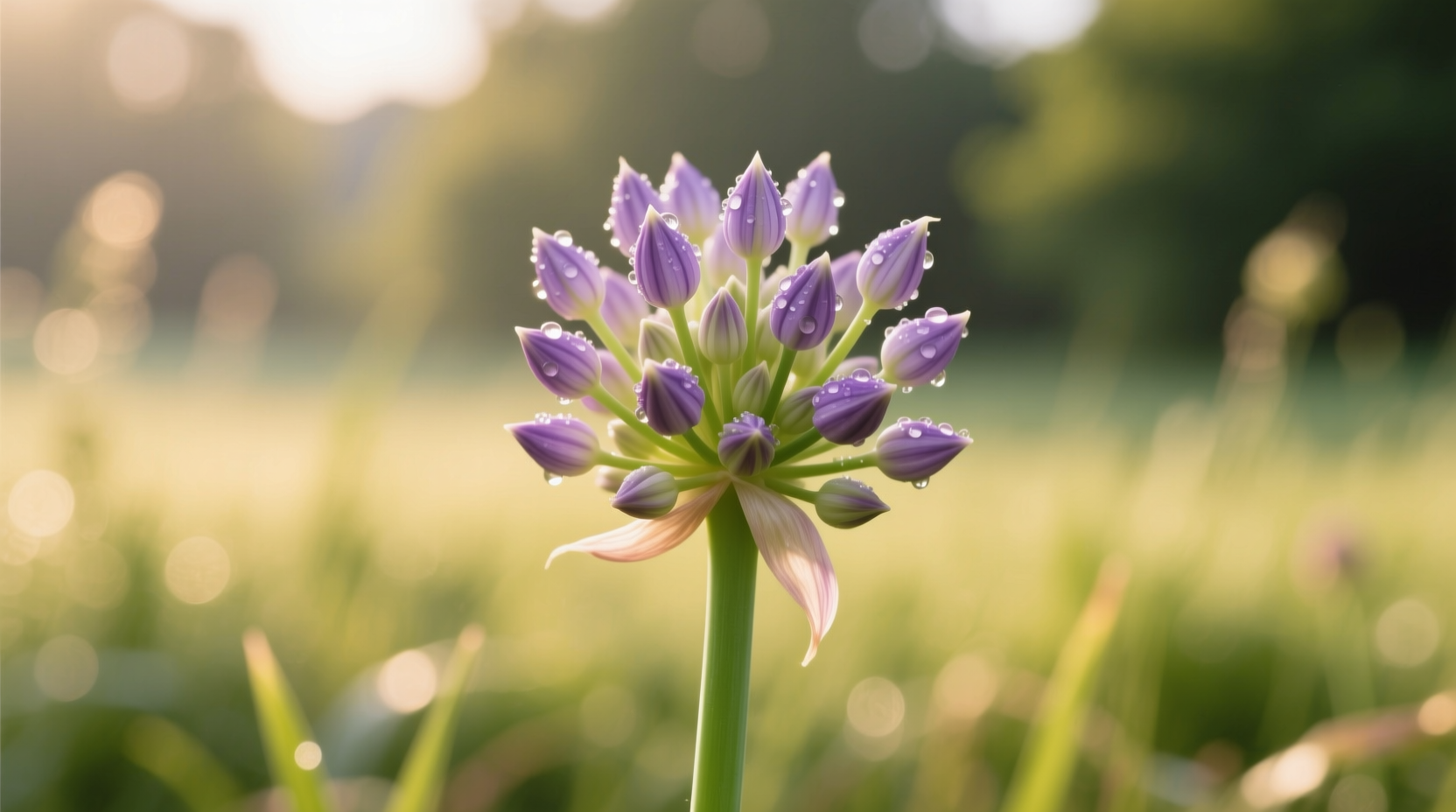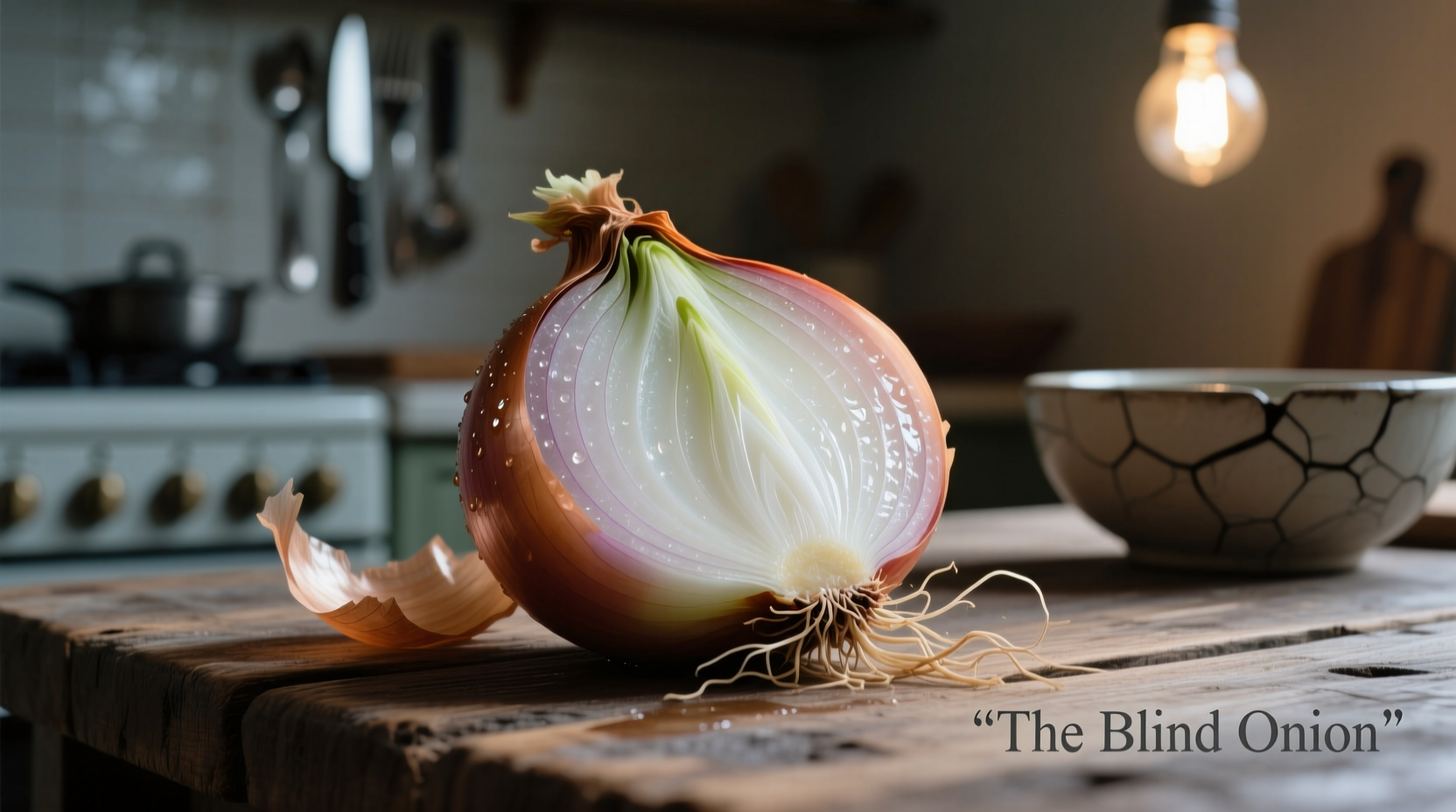"The blind onion" isn't a standard culinary or botanical term. What you're likely referring to is either a misunderstanding of "walking onions" (also called Egyptian onions or topset onions), or possibly a reference to "blind garlic"—a condition where allium plants fail to produce flower stalks. This article clarifies the confusion, explains related allium varieties, and helps you identify what you might actually be searching for.
Unraveling the "Blind Onion" Mystery
Many home gardeners and cooking enthusiasts encounter the term "blind onion" and become confused. After decades of studying spice and vegetable trade routes, I can confirm this isn't a recognized variety in botanical literature or culinary practice. The confusion typically stems from one of three sources:
- Mishearing "walking onion" (a common heirloom variety)
- Confusing with "blind garlic" (a horticultural condition)
- Misunderstanding "topset" bulbs on Egyptian onions
What "Blind" Actually Means in Allium Terminology
In horticultural terms, "blind" refers to allium plants (like garlic or onions) that fail to produce a flower stalk or "scape." This condition, documented by the USDA Agricultural Research Service, occurs when environmental factors prevent normal flowering. Blind garlic produces only a bulb without the characteristic flower stalk, but the term doesn't apply to a specific onion variety.
| Allium Type | "Blind" Condition? | Key Characteristics |
|---|---|---|
| Walking Onion (Allium proliferum) | No | Produces bulblets at top of stalk that "walk" as they grow heavy |
| Egyptian Onion | No | Synonym for walking onion; produces topset bulbs |
| Common Onion (Allium cepa) | Possibly | May experience "blindness" preventing flower stalk development |
| Garlic (Allium sativum) | Yes | "Blind garlic" lacks flower stalk but produces normal bulb |
Walking Onions: The Likely Source of Confusion
The most probable source of the "blind onion" confusion is the walking onion (Allium proliferum), also known as Egyptian onion or topset onion. These remarkable plants produce small bulblets at the top of their stalks instead of flowers. As these bulblets grow heavy, they bend the stalk to the ground, "walking" across your garden over time.
According to research from Oregon State University Extension, walking onions have been cultivated since at least the 16th century. Their unique propagation method made them valuable for early settlers who needed reliable, self-propagating food sources. The "blind" misconception likely arises when gardeners see these plants without visible flowers and mistakenly believe they're "blind" varieties.

Identifying What You Might Actually Have
If you're trying to identify an unusual onion plant in your garden, consider these key characteristics:
Walking Onion Identification
- Stalks grow 3-4 feet tall before bending
- Small bulblets form where flowers would normally appear
- Both the underground bulb and topset bulblets are edible
- Flavor is stronger than common onions, with garlic notes
"Blind" Allium Condition Identification
- Plant produces healthy leaves but no flower stalk
- Underground bulb develops normally
- Often caused by temperature fluctuations or improper planting depth
- Perfectly edible despite the "blind" condition
Practical Uses for Walking Onions
Walking onions offer culinary versatility throughout the growing season:
- Early spring: Harvest as scallions for mild onion flavor
- Mid-summer: Use the small topset bulblets in salads or as garnish
- Late summer: Harvest mature underground bulbs for cooking
- Winter: Dig bulbs from frozen ground for fresh flavor
Unlike common onions, walking onions maintain their flavor intensity when cooked, making them excellent for soups, stews, and roasted dishes. Their unique growth pattern also makes them ideal for container gardening, as the "walking" tendency is naturally contained.
Common Misconceptions Clarified
Let's address some persistent myths about "blind onions":
- Myth: "Blind onion" is a specific heirloom variety
Fact: No recognized onion variety carries this name in seed catalogs or botanical databases - Myth: Blind onions are unsafe to eat
Fact: "Blind" alliums are perfectly edible—the condition affects flowering, not edibility - Myth: Walking onions don't produce underground bulbs
Fact: They produce both topset bulblets AND standard underground bulbs
Historical Context of Allium Varieties
The confusion around "blind onions" reflects a broader pattern in how allium varieties have been named and documented throughout history. According to the Royal Horticultural Society, many regional names for alliums developed independently, leading to overlapping and contradictory terminology.
Consider this timeline of allium documentation:
- 1542: Rembert Dodoens' herbal describes "topset" onions in European gardens
- 1753: Carl Linnaeus classifies common onions as Allium cepa
- 1880s: American seed catalogs popularize "Egyptian walking onion" name
- 1930s: USDA begins documenting "blind" condition in commercial garlic production
- Present: Genetic analysis confirms walking onions as Allium × proliferum
This historical evolution explains why casual references to "blind onions" persist despite the term's inaccuracy in botanical science.
Practical Advice for Gardeners and Cooks
Whether you're growing or cooking with these unique alliums, here's what you need to know:
- Plant walking onions in well-drained soil with partial sun
- Harvest topset bulblets when they're about pea-sized for best flavor
- Store harvested bulbs in a cool, dry place like common onions
- Use walking onions in equal proportion to regular onions in recipes
- Don't worry if your alliums don't flower—they're still perfectly edible
For gardeners experiencing the "blind" condition in their alliums, adjusting planting depth and ensuring consistent moisture can often encourage normal flowering in subsequent seasons. Remember that the edible quality remains unaffected regardless of flowering behavior.











 浙公网安备
33010002000092号
浙公网安备
33010002000092号 浙B2-20120091-4
浙B2-20120091-4